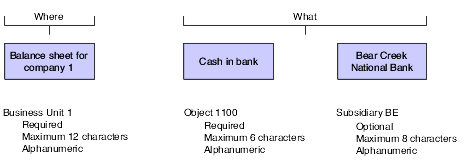Content

ABC has been extensively used in the practice and discussed in the literature. The purpose of this paper is to present the ABC model for joint products.
- Joint products are two or more products that are manufactured from one process.
- RadioCom can produce up to 7,000 radios a month, so the special order would not affect regular customer sales.
- No new tax is to be paid on natural gas liquid or natural gas.
- The cost of this single input and the related manufacturing process costs are calledjoint costs.
- But in the case of joint products, the amount of one product has to be changed to produce another product.
Assume making the rims internally is Alternative 1, and buying the rims from an outside manufacturer is Alternative 2. Describe the key concepts of allocation and apportionment in the taxation of the net income of a multistate business. Describe the relationship between a component unit and a primary government.
Activity-based costing in banking: A case study
For this reason, a quantitative research with the use of questionnaires was carried out. Data analysis showed that those business units that have been most affected by the economic crisis tend to adopt more and use MAIs more extensively than those companies that have been less affected by it. Management Accounting Innovations provide broader and better information to handle the uncertainty that the economic crisis has created. The current evolution of competitive manufacturing requires a shorter market life span of products—emphasizing the design and development phase of the product life cycle.
- The management has to decide whether or not the additional work involved in further production is beneficial than its cost.
- The decorative pieces must be planed and further sized after emerging from the sawmill.
- Before this of separation, one cannot distinguish the products involved because they are in a mixed form and all costs incurred cannot be attributed to any product.
- Management is interested in outsourcing production of these rims to a reputable manufacturing company that can supply the rims for $80 per unit.
- On the contrary, by-product alludes to the products of low usable value which are produced, concurrently with the product having high usable value.
We allocate the costs based on the output weight of the joint products. For example, we get 1,000 lbs of coke and 500 lbs of gas per tonne of coal. The overhead cost per tonne of fuel is $1,000. Sometimes these products vary in quality even though they come from the same primary raw material. Like all coal grades may not be the same even though they are from the same mine. However, joint product costing methods can distribute these products’ production costs. A) allocates joint costs to joint products on the basis of a comparable physical measure at the split off point.
Physical Units Method
The selling price of this beverage would be $\$ 60$ a gallon. Assume Green Mowers can increase capacity to accommodate the special order by paying an additional $20 in variable costs per unit for the additional 1,000 units.
They are widely found in the oil industry, where paraffin, asphalt, lubricant oil, etc., fall under the joint category, where the main product is crude oil. On the other hand, joint products can only be produced together, so adjusting levels https://business-accounting.net/ of production for a joint product will affect production for the other product. Co-products are not the same as joint products. Co-products can be produced in different quantities without affecting the production of other co-products.
International Journal of Production Economics
Give two limitations of the physical-measure method of joint-cost allocation. Activity-based costing has become a mature cost estimation and accounting methodology. Using ABC for cost estimation of manufactured parts is being practiced today with acceptable rate of success. Cost estimation of the design activity on the other hand, has been nebulous and hard to implement. The fierce global competition in the international markets forces manufacturers to compete in quality, cost, and the time to market aspects of their products.
What are examples of joint products?
Examples of joint products are gasoline, diesel, kerosene, lubricants, tar, paraffin and asphalt obtained from crude oil.
The factory lease has five years remaining and cannot be terminated before Joint products – What are joint products? then. Nature Wood, Inc., makes wood tables for commercial use.
What are Joint Costs?
Of course, not just any aggregation of goods and services will create economies of scope. For significant economies of scope, the goods and services need to be similar in nature or utilize similar raw materials, facilities, production processes, or knowledge. Explain why some production costs must be assigned to products through an allocation process. Standard processing is required for joint products. After separation, most joint products don’t need any further processing.
- There were 1,200 gallons of Extreme Chocolate $30 \%$ complete and 200 gallons of Very Strawberry $80 \%$ complete.
- The costs are allocated depending on the joint goods’ production weight.
- Joint products can’t be separated until a specific ‘split-off point’ or ‘separation point’.
- Allocate joint costs to each product using the relative sales value method, and calculate the profit or loss for each product.
- Provide three reasons for allocating joint costs to individual products or services.
- Quality Glass incurs the following annual production costs to produce 15,000 windshields internally.
Since they use the same process, it is impossible to differentiate costs until they reach a point when they need a separate production process. Thus, before their split-off end, one can only allocate the costs to the joint products. Thesales value methodallocates joint costs based on the relative sales value of each product at the split-off point. The costs incurred in the production of joint products are undifferentiated until the specific split-off point. After this split-off point, costs are allocated to individual products. Joint products are two or more products that are generated within a single production process.
